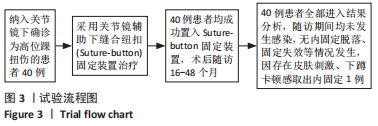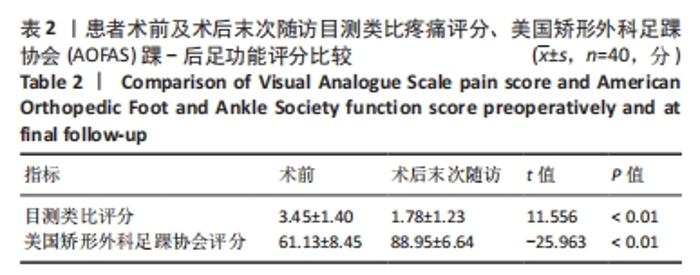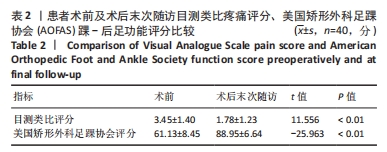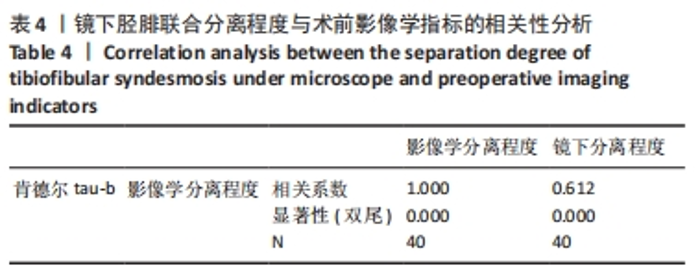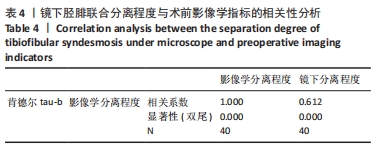[1] VOPAT ML, VOPAT BG, LUBBERTS B, et al. Current trends in the diagnosis and management of syndesmotic injury. Curr Rev Musculoskelet Med. 2017; 10(1):94-103.
[2] HUNT KJ, PHISITKUL P, PIROLO J, et al. High Ankle Sprains and Syndesmotic Injuries in Athletes. J Am Acad Orthop Surg. 2015;23(11):661-673.
[3] WATERMAN BR, BELMONT PJ JR, CAMERON KL, et al. Risk factors for syndesmotic and medial ankle sprain: Role of sex, sport, and level of competition. Am J Sports Med. 2011;39(5):992-998.
[4] WAKE J, MARTIN KD. Syndesmosis Injury From Diagnosis to Repair: Physical Examination, Diagnosis, and Arthroscopic-assisted Reduction. J Am Acad Orthop Surg. 2020;28(13):517-527.
[5] VAN DIJK CN, LONGO UG, LOPPINI M, et al. Classification and diagnosis of acute isolated syndesmotic injuries: ESSKA-AFAS consensus and guidelines. Knee Surg Sports Traumatol Arthrosc. 2016;24(4):1200-1216.
[6] RYAN LP, HILLS MC, CHANG J, et al. The lambda sign: a new radiographic indicator of latent syndesmosis instability. Foot Ankle Int. 2014;35(9):903-908.
[7] DAHMEN J, JADDI S, HAGEMEIJER NC, et al. Incidence of (Osteo)Chondral Lesions of the Ankle in Isolated Syndesmotic Injuries: A Systematic Review and Meta-Analysis. Cartilage. 2022;13(2):19476035221102569.
[8] TURKY M, MENON KV, SAEED K. Arthroscopic Grading of Injuries of the Inferior Tibiofibular Syndesmosis. J Foot Ankle Surg. 2018;57(6):1125-1129.
[9] GERBER JP, WILLIAMS GN, SCOVILLE CR, et al. Persistent disability associated with ankle sprains: a prospective examination of an athletic population. Foot Ankle Int. 1998;19(10):653-660.
[10] 苏同,李彦璋,焦晨,等.急性单纯下胫腓联合损伤的分类、诊断及治疗——欧洲运动创伤、膝关节外科和关节镜学会(ESSKA)共识解读[J].足踝外科电子杂志,2021,8(1):1-6.
[11] LUBBERTS B, GUSS D, VOPAT BG, et al. The arthroscopic syndesmotic assessment tool can differentiate between stable and unstable ankle syndesmoses. Knee Surg Sports Traumatol Arthrosc. 2020;28(1):193-201.
[12] LUCAS DE, WATSON BC, SIMPSON GA, et al. Arthroscopic Evaluation of Syndesmotic Instability and Malreduction. Foot Ankle Spec. 2016;9(6):500-505.
[13] RYAN PM, RODRIGUEZ RM. Outcomes and Return to Activity After Operative Repair of Chronic Latent Syndesmotic Instability. Foot Ankle Int. 2016;37(2): 192-197.
[14] BEJARANO-PINEDA L, DIGIOVANNI CW, WARYASZ GR, et al. Diagnosis and Treatment of Syndesmotic Unstable Injuries: Where We Are Now and Where We Are Headed. J Am Acad Orthop Surg. 2021;29(23):985-997.
[15] CLANTON TO, WILLIAMS BT, BACKUS JD, et al. Biomechanical Analysis of the Individual Ligament Contributions to Syndesmotic Stability. Foot Ankle Int. 2017;38(1):66-75.
[16] FELLER R, BORENSTEIN T, FANTRY AJ, et al. Arthroscopic Quantification of Syndesmotic Instability in a Cadaveric Model. Arthroscopy. 2017;33(2):436-444.
[17] KRÄHENBÜHL N, WEINBERG MW, DAVIDSON NP, et al. Imaging in syndesmotic injury: a systematic literature review. Skeletal Radiol. 2018;47(5):631-648.
[18] HAGEMEIJER NC, ELGHAZY MA, WARYASZ G, et al. Arthroscopic coronal plane syndesmotic instability has been over-diagnosed. Knee Surg Sports Traumatol Arthrosc. 2021;29(1):310-323.
[19] SANDERS FRK, BIRNIE MF, DINGEMANS SA, et al. Functional outcome of routine versus on-demand removal of the syndesmotic screw: a multicentre randomized controlled trial. Bone Joint J. 2021;103-B(11):1709-1716.
[20] 汪炜,卫定禄,李徽.两种内固定方式治疗下胫腓联合损伤的疗效对比[J].实用骨科杂志,2020,26(1):78-81.
[21] 张绍春,周彬,王冶,等.TightRope带袢钢板与皮质骨螺钉内固定治疗踝关节骨折合并的下胫腓联合损伤疗效比较[J].中国骨与关节损伤杂志, 2021,36(12):1262-1265.
[22] 王玉川,陈洁,李智,等.皮质骨加压螺钉与Endobutton钢板治疗下胫腓联合损伤的疗效观察[J].创伤外科杂志,2020,22(1):62-65.
[23] COLCUC C, FISCHER S, COLCUC S, et al. Treatment strategies for partial chronic instability of the distal syndesmosis: an arthroscopic grading scale and operative staging concept. Arch Orthop Trauma Surg. 2016;136(2):157-163.
[24] GÜVERCIN Y, ABDIOĞLU AA, DIZDAR A, et al. Suture button fixation method used in the treatment of syndesmosis injury: A biomechanical analysis of the effect of the placement of the button on the distal tibiofibular joint in the mid-stance phase with finite elements method. Injury. 2022;53(7):2437-2445.
[25] RUSHING CJ, SPINNER SM, ARMSTRONG AV JR, et al. Comparison of Different Magnitudes of Applied Syndesmotic Clamp Force: A Cadaveric Study. J Foot Ankle Surg. 2020;59(3):452-456.
[26] BHIMANI R, SATO G, SAENGSIN J, et al. Fluoroscopic Evaluation of the Role of Syndesmotic Injury in Lateral Ankle Instability in a Cadaver Model. Foot Ankle Int. 2022;43(11):1482-1492.
|

